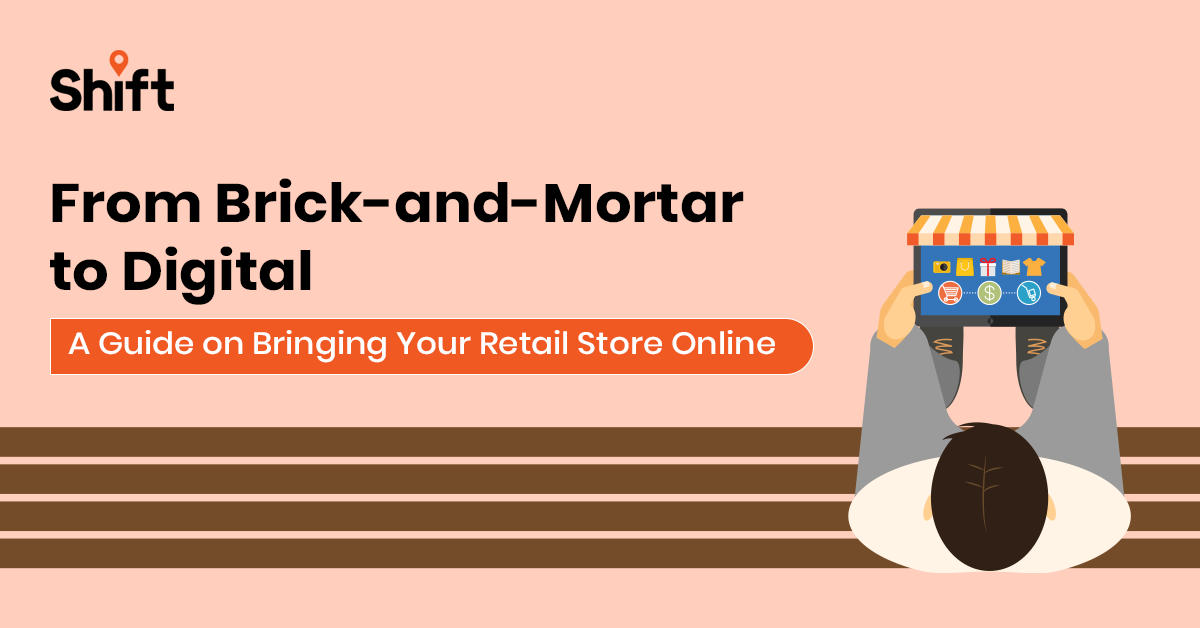From Brick-and-Mortar to Digital: A Guide for Bringing Your Retail Store Online

A brick-and-mortar business is a conventional, street-style venture that provides goods and services to its clients. The trend of businesses transferring their activities from physical storefronts to online platforms is referred to as the shift from brick-and-mortar to digital storefronts. Online shopping’s increased popularity and convenience, as well as technological improvements that have made it simpler for companies to sell their goods and services online, have pushed this change.
Earlier, customers were only limited to shopping at physical stores, which often had limited inventory and limited hours of operation. Yet, since e-commerce platforms have grown in popularity, customers may now purchase whenever and wherever they like. In addition, customers have access to a greater variety of goods and services than a traditional physical store would.
To successfully operate an online retail store, businesses need to take into consideration various aspects such as website design, customer support service, and Order Fulfillment Services for Retail. Order fulfillment is an essential component of e-commerce business. It involves, receiving, processing, and delivering the orders to the customers.
The Importance Of Transitioning to Digital Retail
There are certain reasons why businesses must consider transitioning to the digital age:
- Enhanced Reach
Unlike a traditional business, where the reach was just limited to a small set of people, digital businesses have a much wider presence. By establishing an online presence, businesses can reach a much wider audience. This can lead to boosted sales and revenue for the business.
- Lower Overhead Costs
Maintaining a physical presence can be expensive, with costs such as rent, staffing, utilities, and multiple others. By transitioning to digital retail, businesses can reduce their overhead costs and use utility resources more efficiently.
- A More Personalized Experience
Well, a physical store might lure customers, which can persuade them to make the buying decision. But digital platforms are no less important than physical stores. These platforms are equipped with lucrative features such as a wide variety of products, better prices, convenience, and no-pressure shopping, among others, that influence the buyers’ purchase decisions.
The Procedure for Converting a Physical Store to an Online Store
When transitioning from a brick-and-mortar store to an online digital presence, it’s better to conduct proper research and planning to ensure a smooth transition.
Some key steps to take during the process are mentioned below:
- Analyzing your Current Brick-and-Mortar
It’s better to start by analyzing your brick-and-mortar so that you are aware of your strengths and weaknesses. The data you come across after the analysis will help you determine which products are most popular with each segment of customers.
- Identify your Target Audience
No business can run smoothly without analyzing its target audience. You can modify your marketing methods to match their needs once you’ve determined who your target market is.
- Choosing an E-commerce Platform
There are several e-commerce platforms available today for different kinds of goods and services. Choose an e-commerce platform that best fits your requirements and price range. Shopify, Magento, and WooCommerce are a few well-known e-commerce platform examples.
- Creating a Website
Building a solid online presence through the use of a website is essential when starting a business online. A well-designed website will typically produce an excellent user experience, which will eventually improve revenue. Factors that you must emphasize during the website building process are the layout, color scheme, navigation, and multiple other factors that will ease the users’ experience.
Conclusion
It’s crucial to remember that there is no one-size-fits-all method for converting a physical store to an online digital retail store. Well, every business has its own unique needs and challenges, so it’s essential to continually evaluate and adjust your strategies to ensure that they align best with your business goals.
At Shift, we recognize the significance of digital transformation and provide solutions that are specifically designed to satisfy the requirements of your company. To ensure their success in the digital sphere, we help our clients create and optimize their online stores, come up with successful marketing plans, and provide continuing assistance. With our Order Fulfillment Services for Retail, we ensure that our clients can efficiently handle their order processing and delivery while focusing on their core business functions.